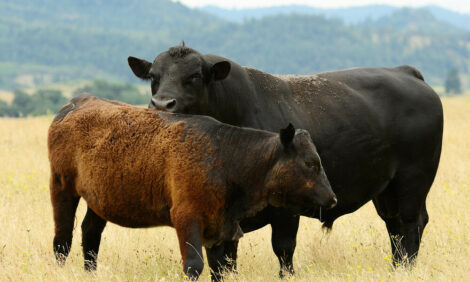



Afghan Farmers Grappling Drought Urgently Need Seed, Animal Feed Support
AFGHANISTAN - A new drought response plan will help 1.4 million of the most vulnerable drought-affected people in Afghanistan during the coming winter season and into April next year, the Food and Agriculture Organization of the United Nations (FAO) announced on the sidelines of the Geneva Conference on Afghanistan (27-28 November).Around 10.6 million people, or close to half of the country's rural population, are severely food insecure. This level of hunger has many causes, including years of civil unrest, but it has been made worse by a damaging drought triggered by low snowfall last winter followed by rainfall of up to 70 percent less than normal in some places. Many families have resorted to desperate coping measures including skipping meals, selling off their livestock or moving to makeshift displacement camps.
FAO is working with partner organizations to provide vulnerable farmers in 22 of Afghanistan's 34 provinces - particularly households headed by women or people with disabilities - with urgently-needed wheat seeds and fertilizers in time for the winter planting season when much-needed rains are forecast to finally arrive.
Livestock protection measures, including concentrated livestock feed, fodder crop seed, and animal health services are also being provided. Livestock is a key source of food and livelihoods for the majority of rural Afghans; keeping livestock healthy through the harsh winter is therefore essential for rural food security, preserves breeding stocks and sustains rural livelihoods for the coming years.
FAO's drought response plan is also intended to help people stay at their places of origin and reduce drought-induced displacements.
Dominique Burgeon, the Director of FAO's Emergency and Rehabilitation Division and Resilience Strategic Programme Leader, has just returned from a mission to Herat, in Afghanistan's drought-affected western province.
"I met many families who had no other option than to sell their oxen to cover their most urgent food needs. These are the oxen they normally use to plough their land," Burgeon said.
"Households will not be able to recover from this drought if farmers do not have seeds to plant when the rains come, or if they have been forced to sell all their animals," said Rajendra Aryal, FAO's Representative in Afghanistan.
FAO requires $30 million to carry out this emergency response, he added.
"While addressing the current situation is extremely urgent, FAO is also working hard in Afghanistan to diversify livelihoods and improve water management over the longer term. We need to make communities resilient to the growing number of climate-based risks that the country faces," said Burgeon. "Only in this way can we break the cycle of poverty and hunger and help bring peace," he added.
Responding to a major livelihoods crisis
Many donors including the Afghanistan Humanitarian Fund, Belgium, France, Japan, Korea, Sweden, Switzerland, and the United States Agency for International Development (USAID), have already generously responded. FAO hopes many more will do so in the coming weeks.
For further information on the FAO's new drought response plan, please click here.
TheCattleSite News Desk


